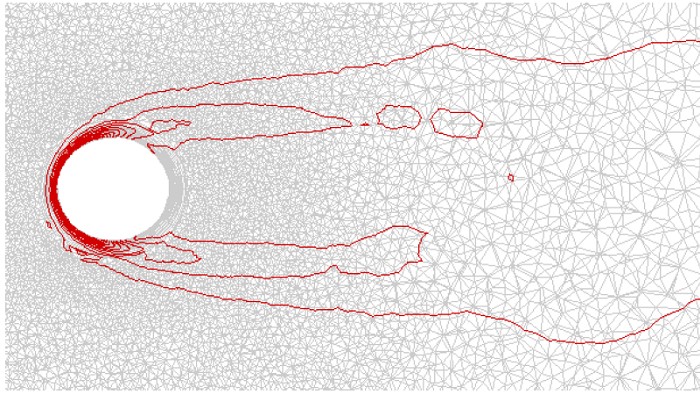The world's first public aviation research center was founded in Göttingen in 1907 by Ludwig Prandtl under the name "Modellversuchsanstalt für Aerodynamik". There, scientists researched many of the fundamentals of modern aviation. In 1969, today's German Aerospace Center was founded by the merger of several research institutions. Research areas in Göttingen include propulsion processes, aeroelastics and aerodynamics.
Flow simulations and point clouds
The equations of Navier and Stokes are particularly well suited for the mathematical description of flows. The fluid solver of DLR solves the Navier-Stokes equations using the finite volume method and sophisticated linear solution methods. This usually requires finely resolved volume grids, which have a considerable impact on the computation time. The quality of the resolution depends on the problem itself. This was the starting point of Mr. Büttner's internship. With this project the student of the Elite Graduate Program„Scientific Computing“ aimed at the implementation of algorithms for problem-oriented thinning of the point cloud of the volume grid. The two approaches of "Nearest Neighbor Thinning" and "Farthest Point Thinning" served as a theoretical basis.
Text: Maximilian Bauer, coordination Elite Graduate Program “Scientific Computing”


